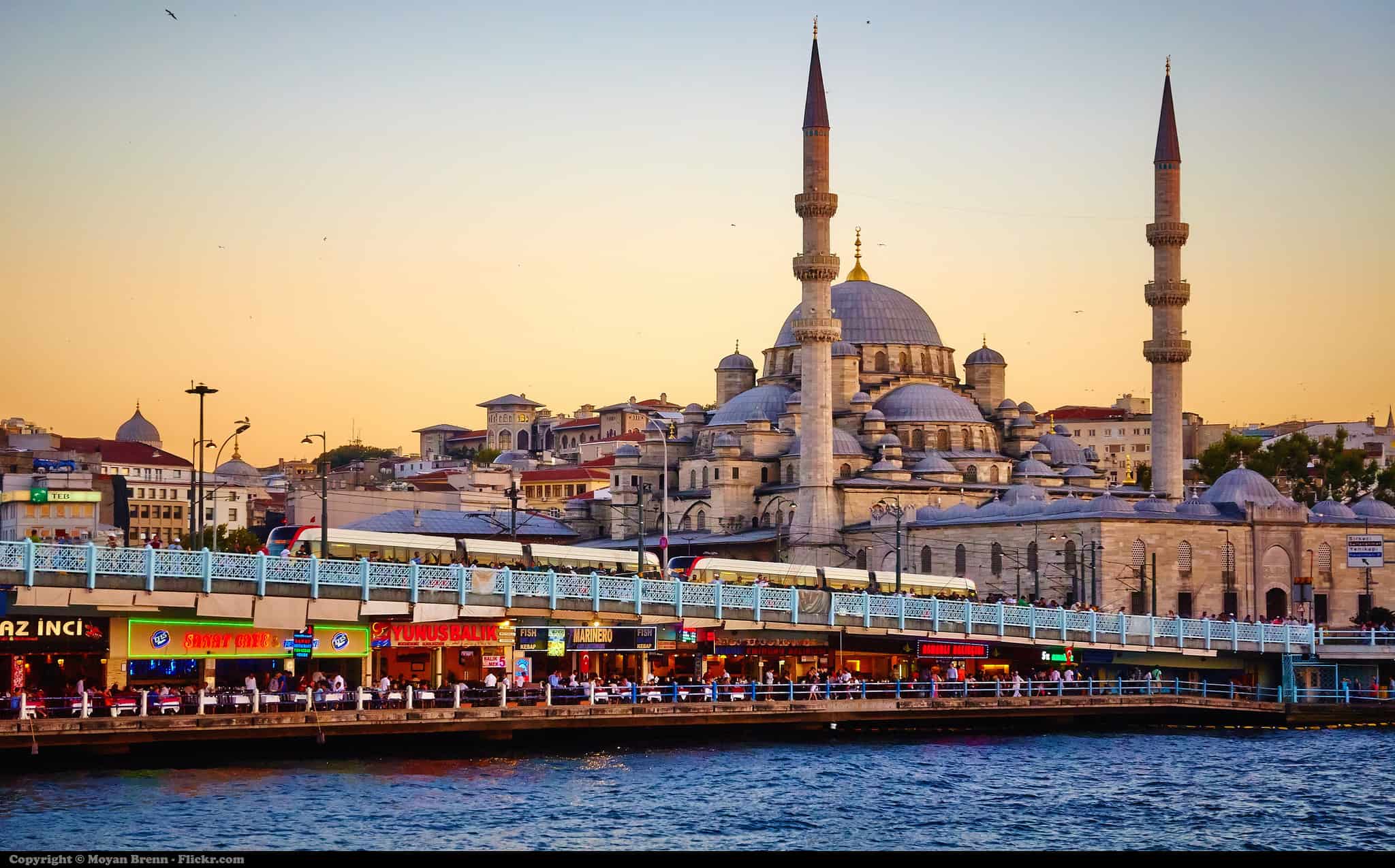Turkey is a destination like no other, the place where East truly meets West, and where you can feast on both worlds. Here’s a short primer on some of Turkey’s top treats.
Istanbul
Turkey’s largest city is a thriving, friendly metropolis that offers a unique cultural blend of ancient and modern, of European and Asian. Its geographic position – separated between the two continents by the narrow Bosphorus Strait – has made it a natural cultural crossroads. Istanbul treasures its history as a capital of three major empires – Roman, Byzantine and Ottoman – yet is dynamically modern. Here Roman walls meet modern skyscrapers, ancient markets meet glitzy shopping malls.The list of Istanbul’s attractions is long and varied; there is enough to see and do here to keep just about anyone busy for days. A Bosphorus cruise is the perfect way to get a scenic overview of the city before heading off to get a closer look at Istanbul’s many treasures.
One of the top draws is the Hagia Sophia, a masterpiece of Byzantine architecture that began its life as a Christian cathedral, later served as a mosque and is now a museum. Opposite it stands the equally impressive Sultan Ahmed Mosque, popularly known as the Blue Mosque. Nearby is the Topkapi Palace, the official and primary residence in the city of the Ottoman Sultans from the mid-15th to mid-18th centuries.
 Turkish Tourist Board
Turkish Tourist Board Turkish Tourist Board
Turkish Tourist BoardBefore heading off on their travels elsewhere in Turkey, recommend your clients pay a visit to a hamam, a traditional Turkish bath.
Ephesus
Once the commercial centre of the ancient world, the city of Ephesus (known locally as Efes), is one of Turkey’s top tourist sites, and appeals to a wide range of visitors, from those interested in Classical history to Christian pilgrims.Little remains of the Greek Temple of Artemis, one of the Seven Wonders of the Ancient World – its site is marked by a single column composed of dissociated fragments – but evidence of the period of Roman rule is everywhere. With only a fraction of the ancient city excavated, Ephesus is considered the best-preserved Roman city in the Mediterranean. Clients can visit several magnificent Roman sites, including the Library of Celsus, which was built circa AD 125 by Gaius Julius Aquila and once held nearly 12,000 scrolls; the Temple of Hadrian; and what is believed to be the largest outdoor theatre (capacity: 44,000) in the ancient world.
Ephesus was one of the cities mentioned by St John in the Book of Revelation as the “Seven Churches of the Apocalypse”– all of which are found in present-day Turkey. The city is also home to the House of the Virgin Mary, an important Christian and Muslim shrine. Mary is believed to have been brought to Ephesus by St John after Christ’s death, and to have spent her final years here.
Cappadocia
 Turkish Tourist Board
Turkish Tourist Board Turkish Tourist Board
Turkish Tourist BoardKonya
One of Turkey’s oldest continuously inhabited cities, Konya is one of Turkey’s great cultural centres. Known as Iconium in Roman times; it was the capital of the Seljuk Turks in the 12th and 13th centuries, during which time the Mevlevi Sufi order, named after the mystic Mevlana Celaleddin Rumi, was founded. Members perform their dhikr (remembrance of Allah) through controlled, trance-like turning or sema, from which they have become famous in the West as the Whirling Dervishes (a dervish is a Muslim religious man who is undergoing an apprenticeship).Clients can visit the green-tiled mausoleum of Mevlana; to which is attached the former dervish seminary, now a museum. Each December the order holds a ceremony commemorating the Whirling Dervishes, who also hold performances throughout the year.
Beach Beauties
Bordered on three sides by three different seas – the Aegean on the west, the Mediterranean on the south and the Black on the north – Turkey boasts miles of stunning coastline and often under-appreciated beaches.Widely considered Turkey’s best, Patara Beach is a secluded, 18-kilometre-long sandy strip on the Mediterranean Sea, 15 kilometres from the upscale resort town of Kalkan. The ancient Lycian town of Patara was a major trading port, and the birthplace of Saint Nicholas; clients can travel back in time by visiting several interesting ruins. Other top Mediterranean beaches are found at Oludeniz, Olimpos, Alanya and the busy resort city of Antalya.
The Cesme Peninsula, on the Aegean coast west of the city of Izmir, offers some of the country’s most beautiful stretches of beaches and boasts a wide variety of accommodation, restaurants, and sports and entertainment facilities. Other Aegean favourites: Marmaris, Bodrum and Ölü Deniz.
Beaches on the Black Sea receive far fewer tourists than their Aegean and Mediterranean counterparts, due mostly to their much cooler waters. The upside: peace and tranquility. One of most popular in the region is found outside the medieval walled city of Sinop.


